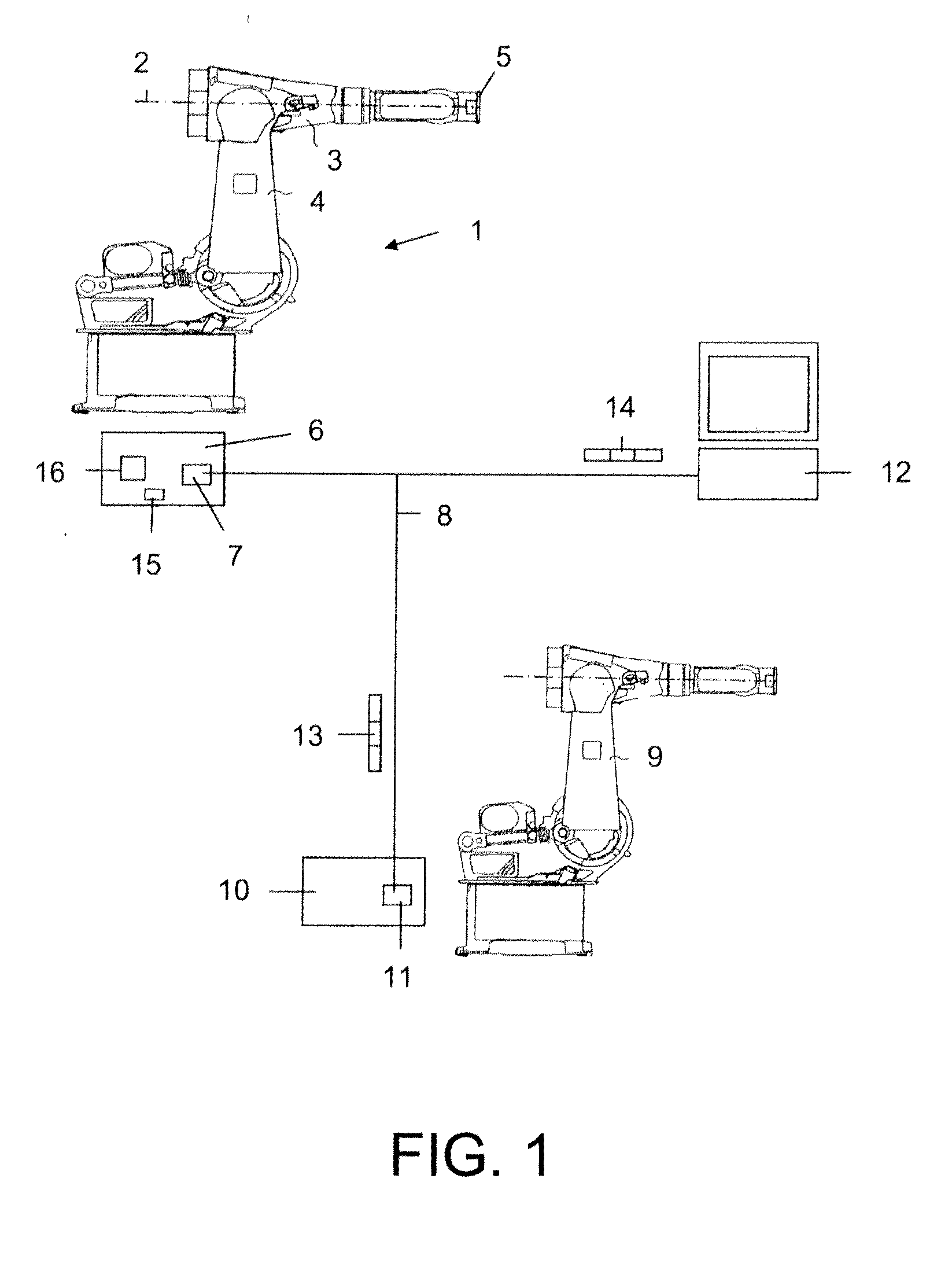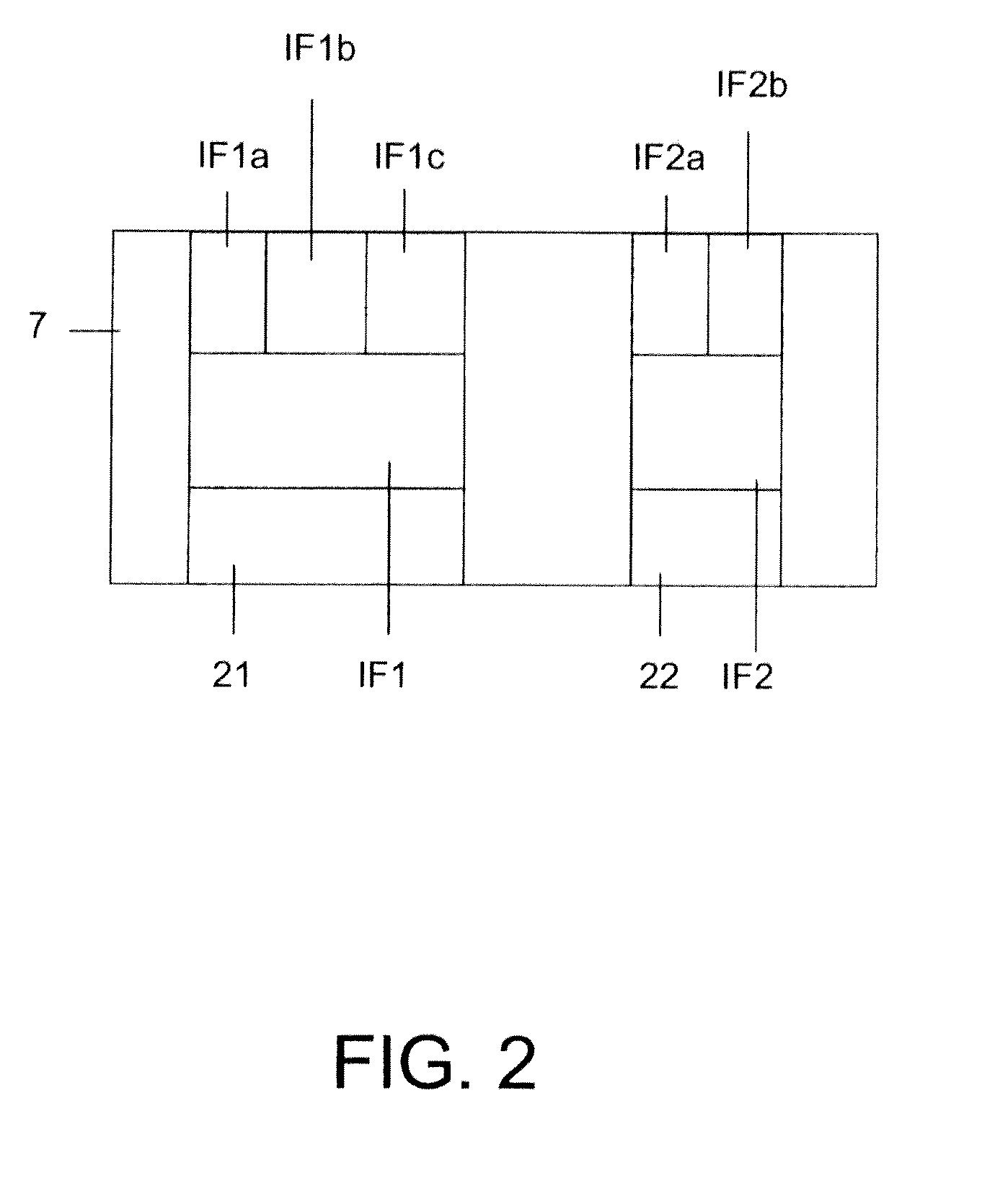Data processing system for an industrial robot and method for managing available resources thereof
- Summary
- Abstract
- Description
- Claims
- Application Information
AI Technical Summary
Benefits of technology
Problems solved by technology
Method used
Image
Examples
Embodiment Construction
[0057]FIG. 1 shows a first industrial robot 1 with kinematics for movements in six degrees of freedom, for example. The first industrial robot 1 has (in a generally known manner) six movement axles, joints, arms 3, 4 and a flange 5. Only one of the movement axles is provided with the reference character 2 in FIG. 1.
[0058]Each of the movement axles 2 is moved by an actuator (not shown in detail). For example, each of the actuators respectively has an electrical motor and gearing as is generally known to those skilled in the art.
[0059]The industrial robots 1 also has a control computer 6 that is connected (the manner is not shown) with the actuators of the industrial robot 1 and controls these in a generally known manner by means of a computer program running on the control computer 6, such that the flange 5 of the industrial robot 1 implements a predetermined movement. A real time operating system (generally known to those skilled in the art) that administers the resources of the con...
PUM
 Login to View More
Login to View More Abstract
Description
Claims
Application Information
 Login to View More
Login to View More - R&D
- Intellectual Property
- Life Sciences
- Materials
- Tech Scout
- Unparalleled Data Quality
- Higher Quality Content
- 60% Fewer Hallucinations
Browse by: Latest US Patents, China's latest patents, Technical Efficacy Thesaurus, Application Domain, Technology Topic, Popular Technical Reports.
© 2025 PatSnap. All rights reserved.Legal|Privacy policy|Modern Slavery Act Transparency Statement|Sitemap|About US| Contact US: help@patsnap.com



